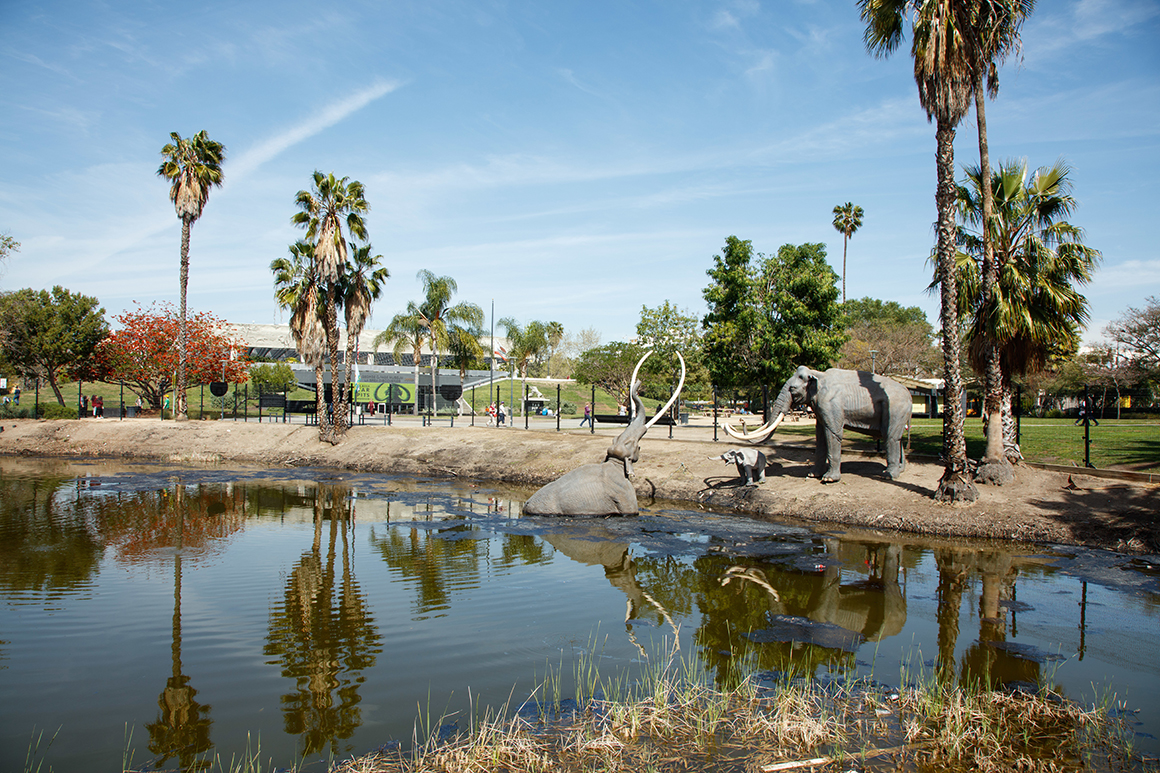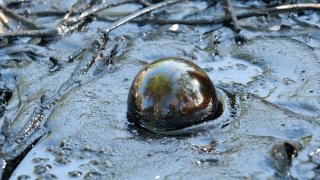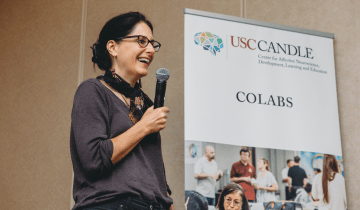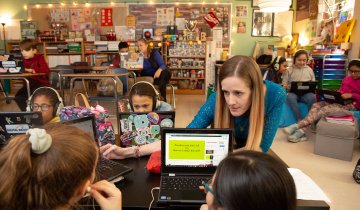Nearly a half million people visit the La Brea Tar Pits each year. For Gale Sinatra and Ben Nye, that’s a half million chances to promote public understanding of evolution, climate change and the nature of science.
Scientists used to assume that saber-toothed cats’ claws were all the same size, so that’s what visitors saw in museum displays of the specimens around the world.
This changed in the 1980s when a rare skeleton of the extinct species was found among the salvaged fossils from the building of the Page Museum. The fossil showed that the digits on the claws ranged in size — similar to fingers on human hands. The feet of dozens of saber-toothed cats had to be remounted to reflect this new found evidence.
This is how science works in the real world, says Gale Sinatra, and she intends to give visitors to La Brea an augmented slice of that reality. Sinatra and Nye, an expert in intelligent tutoring systems and artificial intelligence at USC’s Institute for Creative Technologies (ICT), are working toward an ambitious collaboration with the La Brea Tar Pits and Museum to develop a series of interactive and immersive experiences that let visitors walk in a paleontologist’s dusty shoes.
Each immersion will lead guests through the same narrative: a series of first-person encounters with the scientific process. Using their smartphones, visitors will be able to examine the fossil evidence, formulate research questions, weigh competing hypotheses and adjust their beliefs based on the cascade of evidence. Everything will be organized around a physical timeline that serpentines around the park, and visitors’ footsteps will correspond to the passage of time, from the early Pleistocene to the present day.
“The concept of deep time is very hard,” notes Nye. “People have trouble grasping the relative difference between 50,000 years ago and 55 million years ago.” Walking a timeline makes that concept more accessible. It can also clear up a common misconception that dinosaurs were trapped in the asphalt. Over the years, paleontologists have extracted upwards of 750,000 specimens from the site’s 100- plus pits, including the remains of prehistoric mammals, birds and insects. No dinosaurs, though.

The La Brea Tar Pits (they’re really asphalt, but the misnomer has stuck) are uniquely suited to illustrate the scientific process, says Nye, “because all the science happens in one place. This is where the animals were preserved, excavated, prepared, curated and exhibited.”
The process continues to this day, as debris and organisms land in the open pits. Fossils as tiny as pollen have been collected. Asphalt is an excellent preservative, and fossils recovered from the pits — unlike most fossils, which are really stone casts of petrified matter — retain much of their organic structure.
This means the La Brea Tar Pits “capture a very comprehensive sweep of the ecosystem,” says Nye, giving researchers a rare opportunity to examine the intimate relationship between climate, moisture, vegetation and animal life.
The augmented reality (AR) experiences Sinatra and Nye propose to build will take full advantage of this complexity to introduce visitors to the various methodologies scientists can use to study and document phenomena like ecosystems, climate change and evolution.
Because virtual environments are labor-intensive and expensive to create, such technical decisions are made early in the design process.
Side-by-side comparison of actual learning gains are needed to see the tradeoffs between different options.
An important goal of the project is to leverage AR technology to draw visitors in and motivate
them to learn more about the science that goes on at La Brea.
Any given day, large numbers of school buses can be seen bringing children from all over Los Angeles to the museum. Sinatra sees this as an opportunity to address a key mission of USC Rossier: urban education. While Nye will test various design choices to build the most engaging AR experience possible, Sinatra’s goal will be to explore visitors’ emotions and motivations for science as they experience this new technology.
In their proposed project, Nye’s colleagues from ICT’s Mixed Reality Group will design and evaluate alternative AR treatments and develop the best option into an ongoing installation for the La Brea Tar Pits.
He and Sinatra have applied for a grant from the National Science Foundation to fund the three-year project.





